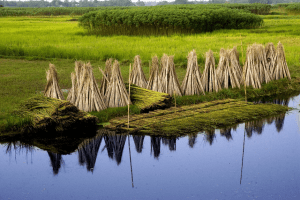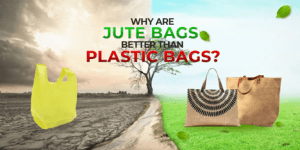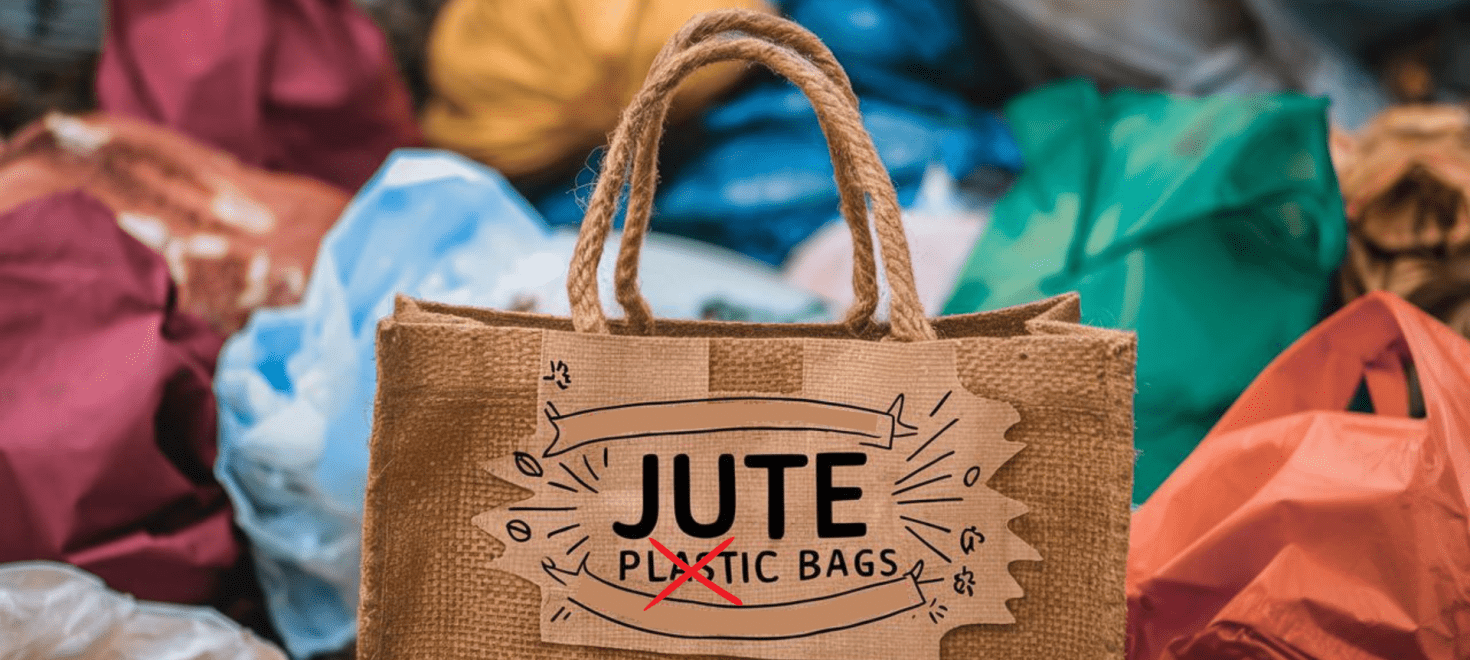Imagine a world where grocery bags and packaging materials disintegrate harmlessly after use, leaving no trace behind. This eco-friendly vision is becoming a reality in Bangladesh, thanks to a remarkable natural fiber called jute.
Jute, also known as “Golden Fiber,” is a fast-growing plant native to South Asia. Its strong, versatile fibers have been used for centuries to make ropes, carpets, and textiles. Now, jute is emerging as a powerful weapon in the fight against single-use plastic pollution.
The Bangladeshi government’s commitment to jute is evident in the Mandatory Jute Packaging Act of 2010. This groundbreaking legislation requires a variety of commodities, from rice to fertilizer, to be packaged in jute bags. Initially met with some resistance, the act has proven to be a success story. Rice millers, once hesitant due to supply concerns, are now embracing jute thanks to government efforts to ensure a steady flow of raw materials.

Jute’s environmental benefits are undeniable. Unlike plastic, which can linger in landfills and oceans for centuries, jute biodegrades rapidly, leaving behind organic matter that nourishes the soil. Jute cultivation also boasts a smaller environmental footprint compared to some other crops. It requires less water and thrives with minimal pesticides, making it a more sustainable agricultural choice.
But jute’s advantages extend beyond environmental benefits. The increased demand for jute has revitalized Bangladesh’s jute industry, which was once in decline. This translates to job creation, particularly in rural areas, providing much-needed income and boosting the local economy.
The story of jute in Bangladesh is not just about environmental responsibility or economic growth. It’s a story of innovation aligning with a global movement towards sustainability. Jute perfectly complements the Sustainable Development Goals (SDGs) established by the United Nations. By promoting jute, Bangladesh is actively contributing to goals like poverty reduction (SDG 1), decent work and economic growth (SDG 8), and responsible consumption and production (SDG 12). Additionally, jute’s role in carbon sequestration through cultivation (SDG 13) and supporting healthy ecosystems (SDG 15) further strengthens its contribution to a sustainable future.
The future of jute in Bangladesh is brimming with potential. As the world grapples with plastic pollution and seeks eco-friendly alternatives, jute stands out as a viable and versatile solution.

With continued government support and a growing global market for sustainable products, jute is poised to become a cornerstone of Bangladesh’s economic and environmental well-being. Jute’s journey from a humble plant to an eco-warrior is a testament to Bangladesh’s commitment to a greener future, inspiring others to embrace sustainable solutions.



Leave a Comment